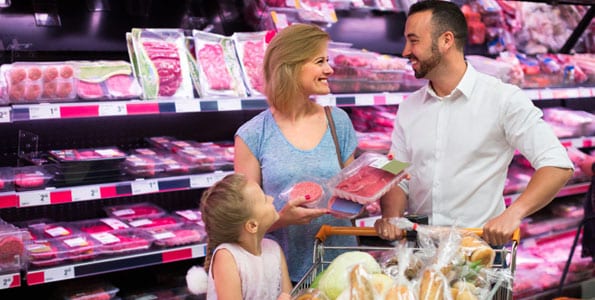Lighting Affects Consumer Perception of Vacuum-Packaged Meats

In late 2016, Hillphoenix and Sealed Air co-sponsored a study that compared consumer assessments of its new proprietary Clearvoyant® LED lighting technology to existing “cool” and “warm” levels of fluorescent lighting. This research supports efforts to encourage the adoption of vacuum packaging for fresh proteins. As a percentage of packages in the refrigerated meat case, vacuum packaging grew from 10% in 2002 to 24% in 2015 as PVC packing decreased from 51% to 33%. For retailers, the benefits include extended shelf life, less handling within the store, less shrink, and more time for employees to help shoppers and keep cases stocked and organized. Consumers also benefit from extended shelf life, which allows more flexible meal planning. In addition, vacuum packages are leak-proof and freezer-ready with no freezer burn during storage.
A key hurdle for faster and broader acceptance of VPM is consumer acceptance of the meat color at the case. Under vacuum, beef and pork have a darker color compared to what shoppers are used to seeing. Once opened, the meat is oxygenated, and the color changes to the shade shoppers recognize from meat overwrapped in foam trays.
90% of retail display cases in North America are equipped with fluorescent lighting in 3500K (a cooler blue tone) and 3000K (a warmer color tone), which are both very common color temperatures used for meat and other proteins. The transition of retail cases to LED lighting is growing, and LED technology enables tuning of the spectral output. In addition to LED’s tremendous ROI from operating efficiencies, it creates opportunities to utilize cleaner, brighter colors. At the time of this study, Hillphoenix had developed their Clearvoyant LED with a broader spectral output to provide more natural lighting that had a positive impact on the color of vacuum-packaged beef.
This test focused on comparing available lighting colors to determine their effects on consumer purchase intent on various protein products with a primary focus on beef.
Consumers initially reacted to each of three case lighting conditions, one at a time. As each case and product was evaluated independently, opaque curtains were closed in front of the other two cases. The order of case exposure was randomized to mitigate potential order biases. In the last step, all the curtains were raised, and consumers could select the case they preferred through direct comparison.